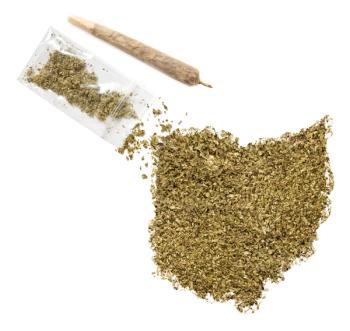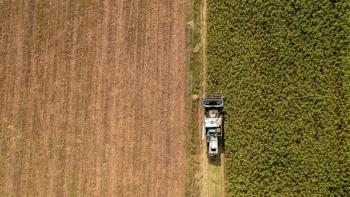
Peer-Reviewed Research Identifies the First Powdery Mildew Resistance Gene in Cannabis
Dewey Scientific discovers the first powdery mildew resistant gene found in cannabis.
Agtech innovator, Dewey Scientific, announced the online publication of new data expressing the first experimentally validated disease resistance gene in cannabis (1). The research article is titled, “
Dewey Scientific’s main objective from this study was to provide the groundwork for the discovery of additional sources of genetic resistance to the various pathogens that can infect C. sativa.
“This discovery and characterization of naturally occurring powdery mildew resistance breaks important new ground, helping to elevate our understanding of the cannabis crop to that of other economically vital agricultural commodities such as hops, berries, or grapevines,” said Dr. Jordan Zager, Dewey Scientific cofounder and CEO (1). “The identification and characterization of PM1 is the first step in establishing the next generation of cannabis cultivars that are suited both for large scale production and optimal efficiency. At Dewey, we’ve already integrated this key resistance gene into over a dozen commercial-ready varieties through classic breeding techniques.”
Authors included on this peer-reviewed research are Dewey Scientific cofounder Paul D. Mihalyov, PhD and Oregon CBD Director of Research & Development Andrea R. Garfinkel, PhD. Genotyping technologies were provided by Lighthouse Genomics and Génome Québec. Dewey Scientific’s founding team also includes Chief Science Officer Dr. Mark Lange, who is one of the world’s foremost experts on terpene biochemistry and natural product biosynthesis. Lange and Dr. Zager have published additional research in peer-reviewed scientific journals, such as
“Pest control strategies that require active management can be difficult to communicate and synchronize across vulnerable farms. Instead, using plant varieties with a naturally robust immune system can make a grower’s life much easier,” said Mihalyov (1). “Taking advantage of natural genetic resistance is also a more sustainable approach than the ‘spray and pray’ method.”
For several plant pathogenic fungi, powdery mildew has become a commonly used term. This includes fungi from the genus Golovinomyces, affecting both commercially cultivated hemp and cannabis. In other studies, resistant plants may have been occasionally recognized. This scientific investigation is the first to track and verify its genetic heritability. Located in the open-access manuscript (2), the authors were also able to develop a genetic marker to detect PM1 with a simple assay, allowing the trait to be introduced into any cultivar using classical breeding methods instead of transgenics or gene editing.
References
https://www.businesswire.com/news/home/20210830005595/en/Dewey-Scientific-Announces-Peer-Reviewed-Research-Identifying-the-First-Powdery-Mildew-Resistance-Gene-in-Cannabis https://www.frontiersin.org/articles/10.3389/fagro.2021.720215/full?utm_source=F-NTF&utm_medium=EMLX&utm_campaign=PRD_FEOPS_20170000_ARTICLE https://academic.oup.com/plphys/article/180/4/1877/6117720
Newsletter
Unlock the latest breakthroughs in cannabis science—subscribe now to get expert insights, research, and industry updates delivered to your inbox.





